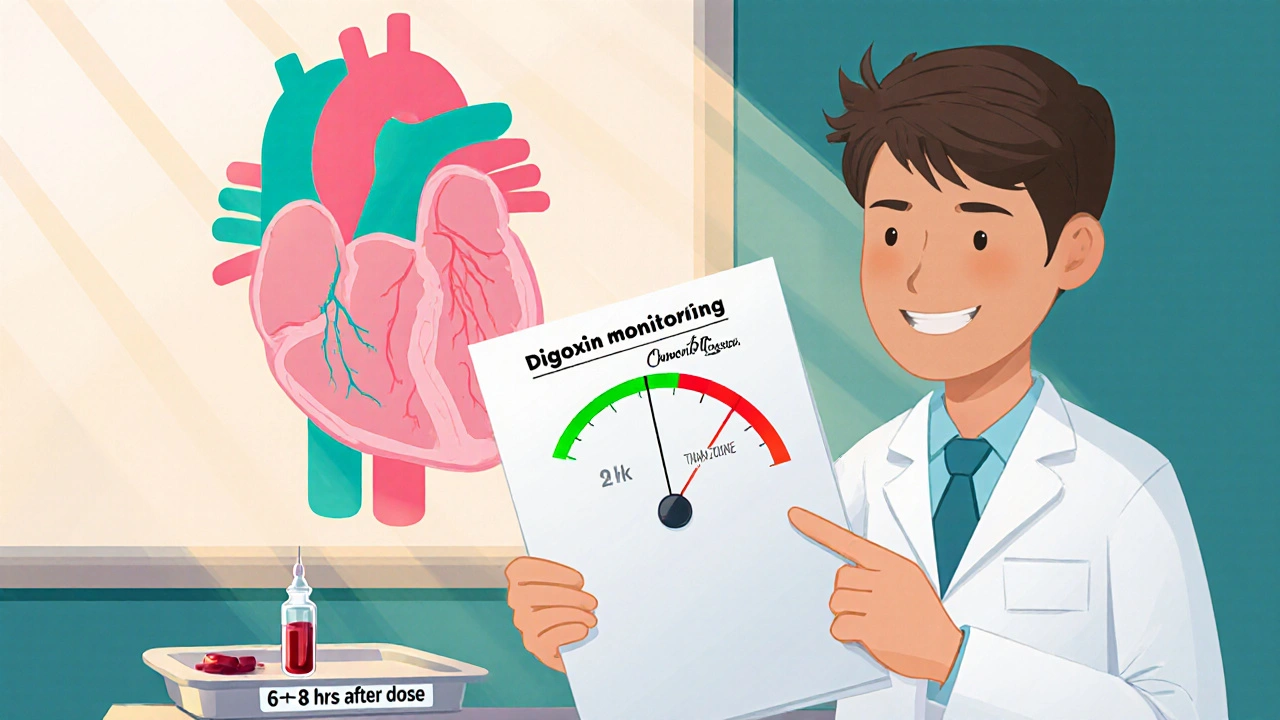When you take digoxin, a heart medication used to treat irregular heartbeats and heart failure. Also known as digitalis, it helps your heart pump more efficiently—but only if the amount in your blood stays in the right zone. Too little, and it won’t help. Too much, and it can be life-threatening. That’s why doctors track your serum digoxin level—a simple blood test that tells them exactly how much of the drug is circulating in your system.
This isn’t just a routine check. digoxin toxicity, a dangerous buildup of the drug in the body can cause nausea, confusion, vision changes, and even deadly heart rhythms. It happens more often than people think, especially in older adults or those with kidney problems. Your therapeutic range, the safe and effective blood concentration of digoxin is usually between 0.5 and 2.0 ng/mL. But even within that range, some people feel side effects at the high end. That’s why testing isn’t one-and-done—it’s ongoing, especially when you start or stop other meds.
Many common drugs mess with digoxin levels. acid-reducing medications, like PPIs and H2 blockers can change how your body absorbs it. Diuretics, antibiotics, and even some supplements can push levels too high or too low. That’s why your doctor needs to know everything you’re taking. If you’re on multiple heart meds, like beta blockers, used to control heart rate and blood pressure, the interaction can be subtle but dangerous.
People on digoxin often don’t realize their symptoms—like fatigue, dizziness, or an upset stomach—are warning signs, not just aging or stress. Regular blood tests are the only way to catch problems early. And if your level is off, it’s not always about changing the dose. Sometimes it’s about adjusting kidney function, switching timing, or swapping a conflicting drug. You’re not just taking a pill—you’re managing a delicate balance.
Below, you’ll find real-world guides on how digoxin interacts with other treatments, what to watch for, and how to talk to your doctor about testing. These aren’t theory pieces—they’re practical checklists and comparisons from people who’ve been there. Whether you’re on digoxin now, or just starting out, this collection gives you the clarity you need to stay safe and in control.

Learn why regular digoxin monitoring saves lives, how to interpret serum levels, and practical steps for safe dosing.
read more